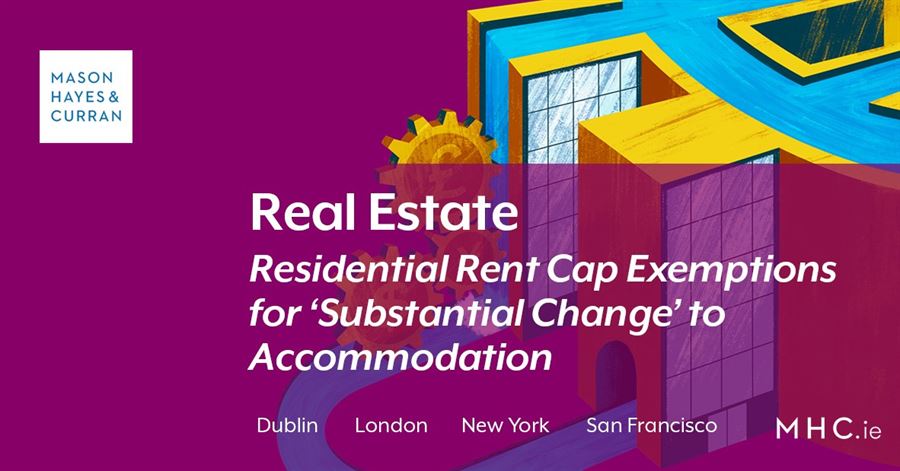
The Residential Tenancies (Amendment) (No. 2) Bill 2018 was passed by Dáil Éireann, the lower house of the Irish Parliament, on 8 May 2019 and by the Seanad, the upper house of the Irish Parliament, on 21 May 2019. Significant changes have been made to the rent cap exemption based on ‘substantial change’ to the dwelling since the previous draft of the Bill and our last update. We look at those changes in this article.
Substantial change
Since December 2016, the Residential Tenancies Acts have imposed rent increase caps on residential tenancies in designated rent pressure zones. The laws contain an exemption from these caps where there has been a substantial change in the nature of the accommodation since the rent was last set such that there would be a change in the market rent.
Prior to the Bill, the meaning of the phrase ‘substantial change’ had been unclear. The Bill proposes to rectify that position by introducing a new definition of what constitutes a ‘substantial change’. This definition has changed a number of times during the drafting process of the Bill.
In the previous draft of the Bill (11 April 2019), the definition required that the change must be (i) a permanent extension which increased the floor area by at least 25% or (ii) achieved at least three of the following:
- A permanent alteration to the internal layout
- An adaptation for use and access by persons with a disability
- A permanent increase in the number of rooms
- An improvement in the building energy rating, or BER, by two or more ratings
The definition in the new draft of the Bill that was passed by Dáil Éireann requires the change to involve either (i) a permanent extension increasing the floor area by at least 25% or (ii) an improvement in the BER by seven or more ratings, or (iii) at least three of the following:
- A permanent alteration to the internal layout
- An adaptation for use and access by persons with a disability
- A permanent increase in the number of rooms
- An improvement in the BER by three or more ratings, where the BER is D1 or lower
- An improvement in the BER by two or more ratings, where the BER is C3 or higher
In all cases, the works involved must not consist solely of works that the landlord is obliged to carry out in accordance with their repairing obligations under the Acts.
Conclusion
To summarise the new definition, a landlord will have to achieve either an increase in the floor area by at least 25%, an improvement of seven energy ratings or achieve three of the five improvements set out at 1-5 above.
The changes in the most recent draft of the Bill effectively make it less likely that a landlord can avail of the exemption on the ground that the BER has been improved. An improvement of two energy ratings will now only suffice if the BER is already C3 or higher. If the rating is lower, an improvement of three energy ratings will be required. As was the case previously, passing this BER condition will only allow the landlord to avail of the exemption if the change to the accommodation also achieved at least two of the other changes listed at 1-5 above.
A new standalone BER exemption has been added but landlords can only avail of this if they achieve a very substantial improvement of seven energy ratings.
It is difficult to see how changes to common areas could constitute a substantial change within the meaning of the definition proposed in the Bill, but that will remain to be determined by the RTB.
It is reported that the Irish Government will ask the President to sign the Bill into law early and therefore the enactment of the Bill is imminent.
The content of this article is provided for information purposes only and does not constitute legal or other advice.





